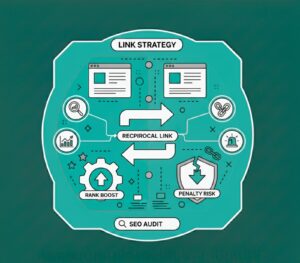Content Mapping Strategy: Mastering SEO to Drive Traffic and Conversions
Blogs | SEO
Written By: Lauren Davison
Introduction
Many websites create content, but they receive less traffic or few sales. The problem is often a lack of planning. A content mapping strategy helps fix that. It shows you what content to make, who should see it, and when.
This way, every blog post or page has a clear purpose. Visitors find what they need, stay longer, and are more likely to take action.
In this blog, we will explain how to plan your content step by step, improve your SEO, and turn more visitors into customers without making things complicated.
Table of Contents
What is Content Mapping and Why It Matters
Content mapping is a way to connect what you write with what people actually need. It is not just about filling a blog or making a page. It is about knowing who is reading and why.
Each part of content should answer a question, solve a problem, or guide someone forward.
Good content mapping also helps search engines. When pages are structured around real questions and terms, Google can find them easily. Users also enjoy it. They get what they want fast, without hunting around.
Understanding the Buyer's Journey
People think in steps before they buy:
- Awareness: Something sparks their attention. They want to learn. Blogs, tips, and short guides work best.
- Consideration: They weigh options. They compare, read reviews, and watch demos. They need details.
- Decision: They decide and look for proof and clear instructions. Including testimonials or free trials helps here.
Content that fits these steps feels personal. It helps for ranking. Users trust it and stick around.
Benefits of Strategic Content Mapping for SEO
Content mapping is a tool for clarity and reach. Using keyword mapping for SEO means each page has a purpose:
- Right keywords for the right stage.
- Clear links that make sense.
- Pages that earn trust and authority.
- Visitors who stay longer and click more.
The payoff? Better rankings, more traffic, and happy readers who know what to do next are the goals. Every user finds value.
Steps to Create an Effective Content Mapping Framework
A clear content framework gives direction. It connects ideas to goals instead of random posting. Every content should fit your brand’s voice, help users, and support SEO.
A strong content mapping strategy does more than organise topics. It links audience needs, search intent, and business targets. The plan shows what to create, why it matters, and where it belongs.
Conducting Audience and Keyword Research
Start with people. Before writing, know who you are speaking to and what they care about. Build a simple picture of your ideal readers and analyse their problems, questions, and search habits.
Next, find the words they use online. Keyword research reveals what your audience types into search bars. Match those terms to each step of their buying path. Early searches need helpful info. Later ones focus on comparisons or choices.
The goal is to speak their language, not yours. When you match words with intent, your content feels natural and relevant.
Categorising Content by Type and Intent
Once you know your audience and keywords, sort your content. Each type serves a purpose. Blogs inform, guides explain, videos engage, and infographics simplify.
Intent decides the tone and depth.
- Informational: Teach something new or solve a problem.
- Transactional: Encourage a decision or purchase.
- Navigational: Help users find a brand, page, or service fast.
Balancing type and intent keeps your site easy to explore. It improves flow, builds trust, and signals to search engines that your structure makes sense. A good mapping plan connects all parts into one clear path, from search to action.
Integrating SEO Best Practices into Content Mapping
Good content does not work alone. It needs proper structure, flow, and visibility. Blending SEO with content mapping helps every piece find its place and purpose. When both align, readers stay longer, and search engines recognise value.
A solid SEO content strategy ties design, keywords, and links together. It builds a path where users can move smoothly while search engines understand the hierarchy.
Keyword Mapping and Placement
Each page should own its space. Assign one primary keyword that captures the focus, then add related phrases that support it. This balance keeps content clear and avoids competition between your own pages.
Primary words tell search engines what a page is about. Secondary ones give depth and reach. The goal is not stuffing keywords but placing them where they fit naturally, in titles, subheadings, and opening lines.
This way, the content sounds real and still ranks. A clean keyword map keeps topics unique, simple, and easy to track.
Optimising Internal Links and Site Structure
Internal links act like roads inside your site. They guide people and help search engines crawl faster. When you link from strong pages to others, you pass authority and lead users deeper.
Use clear text for your links so readers know where they’ll go. Avoid clutter. One good link can do more than many random ones.
A tidy structure keeps pages connected and meaningful. It boosts visibility and helps your SEO content strategy grow with less effort. Everything flows together; clean, useful, and built for both people and search engines.
Measuring Success and Refining Your Content Map
Tracking a content map is not a one-time job. The real progress comes from measuring how it performs and improving it over time. Data shows what works, what does not, and where adjustments are needed.
A strong content mapping strategy evolves through testing and insight. Tracking results keeps your plan relevant, accurate, and in sync with audience needs.
Key Metrics to Monitor
Numbers tell stories when you know what to look for. Start with organic traffic. It reveals how many people find your content through search. If visits rise, your topics and keywords are aligned.
Next, watch dwell time: how long users stay. Short visits may mean weak engagement or unclear messaging. Longer sessions suggest that readers find value.
Conversions matter most. They show how well content turns visitors into customers or leads. Track sign-ups, downloads, or purchases depending on your goal.
Finally, check keyword rankings. These show how visible your pages are for chosen terms. Rising positions mean your SEO work is paying off. Together, these metrics build a clear picture of performance and growth.
Updating and Optimising the Content Map
No content map stays perfect forever. Audiences change, search trends shift, and new goals appear. Regular updates keep your framework sharp and useful.
Review existing pages and spot what feels outdated. Refresh old posts, fix broken links, and replace low-value keywords. Add new topics that match fresh search intent or upcoming trends.
Optimisation is not about volume. It is about precision. Adjust the flow between pages to improve navigation. Strengthen links where users drop off. Keep refining until every piece supports your goals.
A living content map should be steady, flexible, and tuned to results. That is how your content mapping strategy keeps driving visibility, traffic, and trust over time.
Conclusion
Content mapping is more than a planning tool. It is the backbone of effective SEO and meaningful user engagement. When each page fits your audience’s needs, your SEO improves. Visitors stay, explore, and take action.
A strong content mapping strategy gives clarity. It turns scattered ideas into a plan that guides readers from start to finish. Every topic, link, and keyword has a role.
Take the next step. Build a map that works. See how we can help at Midland Marketing. Let us create a strategy that reaches people, boosts traffic, and grows your business.
Frequently Asked Questions
1. What is a content mapping strategy?
It is a plan that matches content to what people need. Each page, article, or video serves a purpose. It allows users to find answers fast and makes search engines notice your site.
How does content mapping help SEO?
When content fits search intent, keywords make sense. Pages link logically. Google sees
structure, users stay longer, and your site ranks higher.
3. Where do I start with content mapping?
First, know your audience. Build simple profiles. Find the words they search for. Then decide which content type fits each stage of their journey.
4. How often should I adjust my content map?
Change is constant. Check your map every few months. Update old posts, add new ideas, and remove what no longer works. Keep it fresh and useful.
5. Can content mapping increase conversions?
Yes. When content matches needs and guides people clearly, they take action. Good planning turns visitors into leads, sign-ups, or customers.

Written by - Lauren Davison
Introducing Lauren – one of our content writers who has a flair for SEO and creative strategy!
With a Master’s Degree in Creative Writing, Lauren has niched down into SEO and content writing.
Outside of work, she loves watching the darts, reading and the pub on the weekend.
Want some more?
Latest Insights & News

Reciprocal Links in SEO: Do They Still Boost Rankings or Risk Penalties?
For the keyword “reciprocal links SEO,” focus on explaining how reciprocal linking works today. Reciprocal links are not harmful by default, but Google can flag excessive or manipulative link exchanges. To stay safe, only exchange links when they are contextually relevant, natural, and valuable to users.

SEO as the Foundation of Digital Growth: Why It’s More Than Just a Marketing Tactic
When focusing on “SEO for business growth,” highlight how SEO directly contributes to long-term scalability. Modern SEO goes beyond ranking—it boosts brand visibility, qualified traffic, customer trust, and conversion opportunities. To optimize effectively, ensure your content covers user intent, builds topical authority, and leverages technical SEO elements like fast loading, mobile-friendly design, and structured data.

AEO Mastery: Step-by-Step Guide to Building AI Citations & Boosting Visibility
When targeting the keyword “AEO Guide to Building AI Citations & Boosting Visibility,” focus on Authoritative Engine Optimization (AEO) principles. AI-driven search requires clear, structured, and entity-rich content.
